North of Dublin, lies a world of mysterious burial mounds, ruined abbeys, round towers, haunting high crosses and Ireland's biggest castle. The Valley of the Boyne is a peaceful day trip through history...
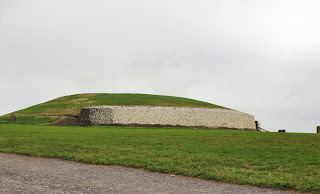 |
| Tomb At Newgrange |
The tranquil Boyne River valley lies just 48 km North of Dublin, yet it is worlds away from Ireland's busy capital city. The Boyne River was where the first settlements in Ireland were established over 5,000 years ago. These pre-Celtic or indigenous Irish people settled along the Boyne River (or An Bhóinn or Bóinne in Irish) and worshipped the Goddess Boann who according to myth, created the river and also who the river is named after. This relatively short 112 km river passes through some of Ireland's most beautiful scenery and historical monuments, many of which are FREE to explore.
Getting around this rural area without a car may be a bit difficult. You can book day tours from Dublin that go to some of these sites that I list below. Try www.boynevalleytours.com they can custom tailor a tour of the places you wish to see.
Brú Na Bóinne
 |
| Entrance To Newgrange |
Brú Na Bóinne means "dwelling place of the Boyne" in Irish. Located on a bend in the Boyne River, Brú Na Bóinne is a complex of about 90 megalithic monuments plus 3 enormous passage tombs: Dowth (rhymes with South), Knowth and the famous Newgrange. This unique archeological landscape has been designated a UNESCO world heritage site, and an excellent museum and visitor centre* has been built to educate visitors on the various passage graves, henges, standing stones and Neolithic art. The people who created these structures pre-date the Celts and showed such a strong knowledge of astronomy and architecture that these structures still align with the path of the sun 5,000 years after they were built! You can tour inside one of these passage tombs and witness the Winter Solstice sunlight creeping into the ritual chamber...an experience you will never forget. Check out my full blog post on Brú Na Bóinne
*THE VISITOR CENTRE IS CLOSED FOR RENOVATIONS STARTING END OF MARCH 2019
Hill of Tara
Another ancient site nearby is the Hill of Tara. This was the place where the High King of all of Ireland was crowned at the standing stone "Lia Fáil" or "The Stone of Destiny." The King followed the Pagan ritual called the ban-feis, where the High King marries the Goddess Maeve in order to be crowned. From Neolithic times up to the last Pagan High King of Tara Diarmait mac Cerbaill, who died in 565 CE; this hill was Ireland's seat of power. This where Saint Patrick came in the year 432 to challenge the High King of Tara to be able to spread the new religion of Christianity. At the Hill of Tara, it's not all about what you SEE; it's about what you FEEL, and the earth vibrates with energy in this place!
There is a visitor center in an old church of St. Patrick where you can buy tickets for €5 to watch a 20-minute instructional video and join a guided walk that explains the various sites atop the Hill of Tara. The visitor centre open from 10:00am to 6:00pm, mid-May to mid-September but the Hill of Tara is open year round and FREE!
Monasterboice
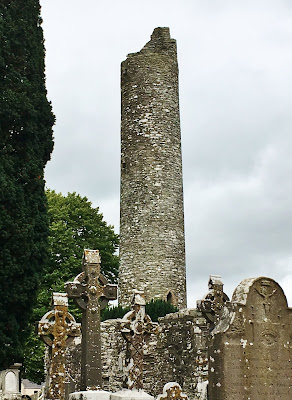 |
| Round Tower |
 |
| Murdocks Cross |
Monasterboice is a ruined early Christian monastic settlement like Glendalough in the Wicklow Mountains south of Dublin. This monastery was settled by Saint Buithe in the late 5th century but was in it's prime in the mid 900's when an Abbot named Muiredach (Murdock) was in charge. This is when the round tower of Monasterboice was built, and now it stands with it's top blown off. One of my favourite Celtic High Crosses in all of Ireland is Murdock's Cross which is sort of a picture book carved in stone of Bible stories that the Abbots used to teach Christianity to the Pagans. This cross is 5.8 meters high (19 feet) and is made of sandstone that is weathering away in the Irish elements. There are other beautiful High Crosses in this graveyard, and also an intriguing sundial from around 1,000 CE. The lines on the sundial mark the 5 times per day the monks are required to pray. This site is FREE and always open!
Eventually, in 1142 Monasterboice fell out of favour when a more significant abbey was built 2 miles away in a new style "popular" on the continent...
Mellifont Abbey
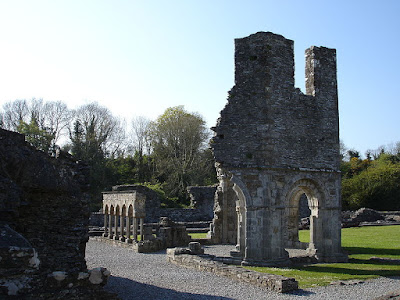 |
| Ruins of Mellifont Abbey |
Trim Castle
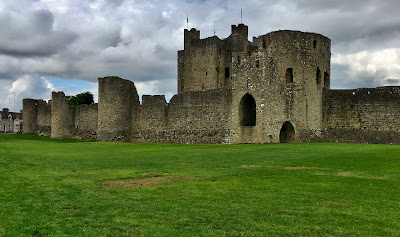 |
| Trim Castle |
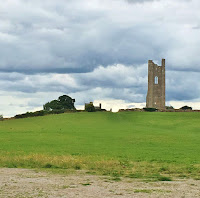 |
| Trim Castle From The Boyne River |
After your castle tour, how about a stroll? There are some lovely walking trails along the Boyne River that cross over into Newton (which was actually the "new town" in 1200) and meander through the fields to the old church ruins of Clonbun. FREE to explore this dark and brooding churchyard! Not far past the churchyard along the walking trail is one of the oldest pubs in Ireland; the Marcie Regan Pub. This place is ancient, and the beams and low ceilings are all original! Grab a pint at this super atmospheric pub and soak in the history. NOTE: The Marcie Regan Pub does not serve food; just beer and great craic!
The Boyne Valley offers so much more rich history to explore such as the Battle of the Boyne (www.battleoftheboyne.ie), Hill of Slane/Slane Castle in the ancient town of Slane and also the village of Kells known for its early monastery founded by Saint Columba. This old Christian monastery has an excellent round tower, an oratory and four of the most beautiful high crosses in Ireland.
It's easy to get off the beaten path in the Boyne River Valley. If you have spent time in this region what was your favourite place to explore? Comment down below, I would love to hear from you!
Follow me on FACEBOOK, INSTAGRAM and BLOGLOVIN' for daily photos and updates! #slowtravel🐌
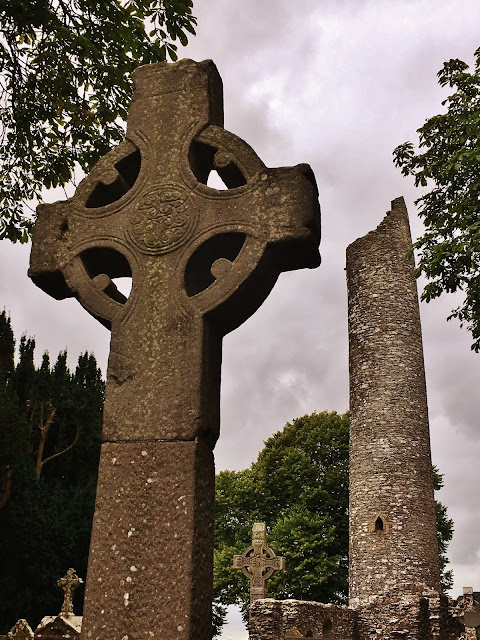


No comments:
Post a Comment